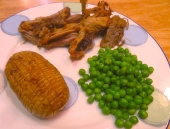Things have changed a lot since I got my music degree and teaching degree in the mid 80s in Canada.
I didn't have the ability to pursue biology and geology and I was expected to get a degree, so after the first year, I transferred I to a 3 year program which put me almost half finished because I had taken music performance on top of my required credits, requiring 2-3 hours daily practice and keeping me out of trouble, and I took a music education summer evening course while I was working as a teaching assistant, having volunteered as one the previous summer. It was suggested I take the concurrent education that was new and I did.
I never regret that I did this, and had many fun years teaching music.
Now tuition is even expensive in Canada, but I have a friend who worked as a store manager up.north before it's reorganization, and he doesn't have a high school diploma. In his case he asked and I recommended he try to get in to any college program as a mature student, because then he won't need the high school diploma. I suggested he might consider personal support worker, a thankless job but in high demand and some colleges are even offering it free. The main reason would be he wouldn't likely need any upgrading courses. So why spend time doing high school credits when you can at least be employable which is his main concern.
So it depends. If you are new to your country or didn't finish high school and need credentials, yes, get some post secondary courses. I also told him about all the open university courses available throughout the world, plus Athabasca university offers the option to challenge for credit which is way cheaper (it turned out I was a computer programmer whiz so I took a bunch of credits by reading the text book and writing the exam -- and made some real cash doing that in between music teaching cintracts)
I really don't know if getting into debt is wise though. I went the gert route as soon as I could in my early 40s and have been debt free for 20 years.
I would say every situation is different, but if you think you can handle nursing, that's a great skill that is guaranteed to provide a job in the rat race but also has transferable skills in an alternative lifestyle. That's what my son did, but tuition is as close to free as is possible in Quebec (called CEGEP) and we did it debt free.










